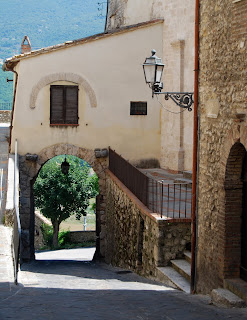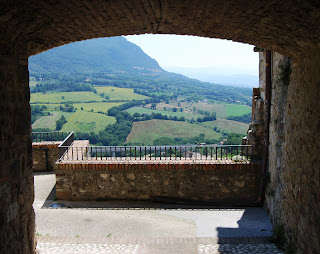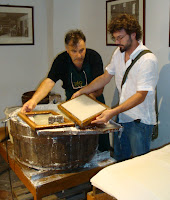
- sewing systems for books
- the different structures of books

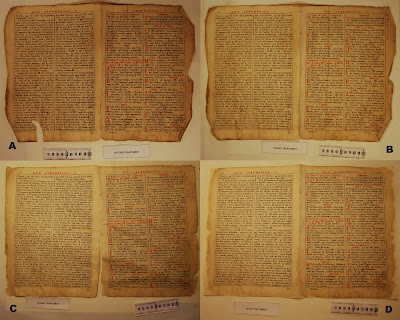
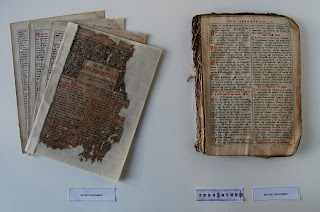










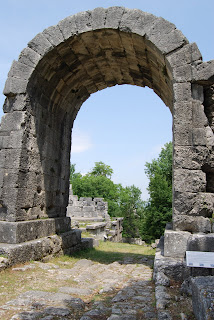



Here we have Porta Romana, the
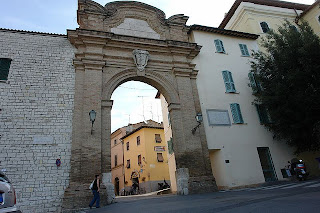
south-western entrance to San
Gemini. So called because it
faces Rome, it lies at the end of Via
Roma. Entering Porta Romana, we have the Hotel Duomo down a little alleyway to
the right. Next to the hotel is the
Church that Hotel Duomo is
named after. This is actually in
incorrect labeling, as the church was never a Duomo (Cathedral).

To have a cathedral, a city must have a bishop. San Gemini never had a bishop. The name could come from the period when the near-by cities of Terni and Narni were mis-behaving according to the C
hurch, and the Pope continually threatened to appoint a bishop to San Gemini, which would make San Gemini higher in importance than the
other two cities.
Across the street from the Duomo is the first of San Gemini's three bars:
Bar Piaretti. The bars in Italy seem to stay open all the time - in the morning they are cafes, and they gradually switch over
to a typical bar atmosphere by evening. Bar Piaretti is also
one of the two gelaterias in town - they are in a competition over which has the best gelato.
A little further up Via Roma, we have 27 Via Roma.
Smashed in between the Pizzeria (one of two) and the Panetteria, you enter this door, climb several sets of stairs, and finally arrive at my apartment. 5 girls share the apartment with only one bathroom. We also have one of the only functioning ovens in the city - at least among the
apartment-pool for the program. The shower has no shower curtain, and the washing machine can only be run on "Rapido" cycle or else it will flood, but it's a lovely apartment.
Back down the steps and onto Via Roma, we continue our tour. On the left is the kind-of-sort-of restaurant- the Taverna. I say kind-of-sort-of
because I have never seen this restaurant open. Apparently, they only open three times a year for special events. They did, however, host "Cena sotto le stelle" - Dinner under the
stars. Every year during the summer, Pro Loco San Gemini, the local events council, puts on this special dinner for the locals. That will be another post in and of itself :)
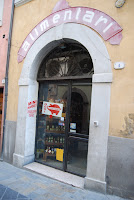
Just before entering the main square, we come across the mini-market, the one and only grocery store in town. (The
other option is hiking down the hill to the Conad - a good 1/2 hour hike in the brutal heat) You can find most of your needs at the mini mar
ket. Keep in mind, if there is no fresh milk, there is boxed milk in the back, next to the cleaning products.
Through the next gate,there is a fruit and vegetable shop on the left, another (smaller) mini-market on the right, and a barber-shop on the left.

Then we come to the Stairs of Death and Treachery. Up these stairs and to the
left is the Il Ristoro del Cabaliere, otherwise known as the Dodo. (also, if you continue along this street, you return back to Piazza San Francesco along a higher road.) Just after the Stairs of Death and Treachery is the honey shop, open only on Sundays and Festivi days. Then thebutchers shop, the dog-in-the-garage-with-a-hoarse-bark, and finally to Palazzo Vecchio.

Palazzo Vecchio used to be the town hall, until it burned down. Then the town hall was moved to it’s present position in Piaza San Francesco, and
when Palazzo Vecchio was rebuilt, it was a privately owned
building. Occasionally, art exhibitions are held in t
he main room, among the beautiful frescos on the wall. But mostly, it is
the main classroom for San Gemini Preservation Studies.
The other classrooms are further down the street, past the Torchio, another restaurant, and to the right. Straight ahead is the Dungeon, where the paper restoration workshop is. Also in the Dungeon is a music

studio, which serenades us with the beautiful strains of beginning clarinet/trumpet/other students practicing.
If instead of entering the Dungeon you take a left, you will happen upon a little courtyard with an entrance to the
Church of Giovanni Battista.

To the right of the courtyard is the entrance to the painting studio and
archeologist’s workshop. Another exit of the right of the courtyard leads to a path surrounding the church, providing a beautiful view of the
countryside, with the cities of Cesi and Terni in the distance. If you follow the path around the church, it will put you out facing the main entrance of Giovanni Battista. If you are facing Giovanni Battista, Torchio restaurant is on your right and Porta Giovanni Battista is on your left. Behind you is the local convent, with welfare and the local library and archives.

view of the country, with Cesi in the distance
Looking again at the entrance to Giovanni Battista, we see that the street leading down to the gate makes a pretty awkward intersection with the church’s patio. This is indicative that the gate was built after the church, the Church having been originally built outside of the city and then enveloped into the walls during one of San Gemini’s expansions.
Out Porta Giovanni Battista and 3km down the road and to the right and up a hill and down a dirt road is the archeological site of Carsulae. We’ll make that trek at another time. To get you excited - it’s uphill both ways, along a main road, complete with hairpin turns, with no sidewalks. For now, thank you for joining me on this tour of San Gemini! I hope you enjoyed!
Ciao, a presto!
(all pictures mine, except for the first two which belong to romergatto on flickr)

